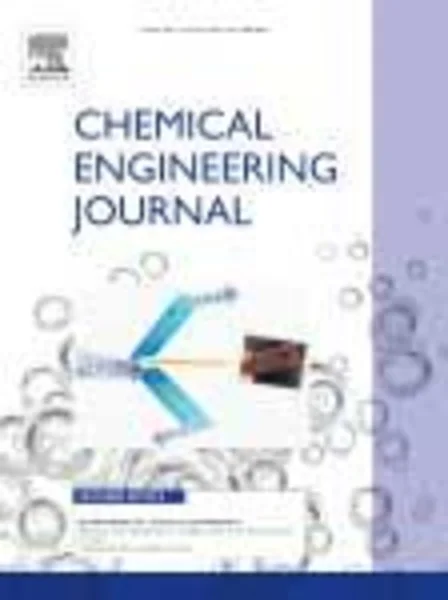-
the adsorption mechanism of elemental mercury on cuo (1 1 0) surface
جزئیات بیشتر مقاله- تاریخ ارائه: 1392/01/01
- تاریخ انتشار در تی پی بین: 1392/01/01
- تعداد بازدید: 600
- تعداد پرسش و پاسخ ها: 0
- شماره تماس دبیرخانه رویداد: -
understanding the impact of cuo in selective catalytic reduction (scr) process for elemental mercury removal will broaden the applicability of scr system in hg removal strategies. first principles quantum mechanical methods based on density functional theory were used to investigate the adsorption mechanism of hg on cuo (1 1 0) surface. the cuo (1 1 0) surface was represented by a periodic model, and different adsorption sites were considered. the electronic structural changes upon adsorption were also studied to better understand the surface reactivity. the results show that elemental mercury binds weakly to the o-terminated cuo (1 1 0) surface, which indicates a physisorption mechanism. on the contrary, hg is strongly adsorbed on the cu-terminated cuo (1 1 0) surface and chemisorption is the likely adsorption mechanism. the adsorption of hg on cuo (1 1 0) surface is mainly by the cu-terminated mode. cusubtop is the most advantageous adsorption site with an adsorption energy of −116.76 kj/mol. in addition, bond population analysis indicates that hg atom preferably adsorbs on cuo (1 1 0) surface with the bonding of cu atoms. according to the calculation of the partial density of states of the surface atoms, strong mercury interactions with the surface cause a significant overlap between the d-state of mercury and the s-states of cu.
مقالات جدیدترین رویدادها
-
استفاده از تحلیل اهمیت-عملکرد در ارائه الگوی مدیریت خلاقیت سازمانی و ارائه راهکار جهت بهبود
-
بررسی تاثیر ارزش وجوه نقد مازاد بر ساختار سرمایه شرکت های پذیرفته شده در بورس اوراق بهادار تهران
-
بررسی تأثیر سطح افشای ریسک بر قرارداد بدهی شرکت های پذیرفته شده در بورس اوراق بهادار تهران
-
بررسی تأثیر رتبه بندی اعتباری مبتنی بر مدل امتیاز بازار نوظهور بر نقد شوندگی سهام با تأکید بر خصوصی سازی شرکت ها
-
تأثیر آمیخته بازاریابی پوشاک ایرانی بر تصویر ذهنی مشتری پوشاک ایرانی (هاکوپیان)
-
جداسازی اکسید روی از لجن واحد آگلومراسیون ذوب آهن اصفهان به روش هیدرومتالوژی
-
یک مدل شبکه دو لایه یکپارچه برای طراحی زنجیره تامین مقاوم برای اقلام فاسد شدنی تحت اختلال
-
بررسی آلودگی کفش های محیط های استریل و نیمه استریل اتاق عمل بیمارستان توحید سنندج
-
بررسی وضعیت سلامت اجتماعی در دانشجویان تربیت بدنی دانشگاه آزاد اسلامی واحد بیرجند
-
head-on collision of ion-acoustic solitons in an ultracold neutral plasma
مقالات جدیدترین ژورنال ها
-
مدیریت و بررسی افسردگی دانش آموزان دختر مقطع متوسطه دوم در دروان کرونا در شهرستان دزفول
-
مدیریت و بررسی خرد سیاسی در اندیشه ی فردوسی در ادب ایران
-
واکاوی و مدیریت توصیفی قلمدان(جاکلیدی)ضریح در موزه آستان قدس رضوی
-
بررسی تاثیر خلاقیت، دانش و انگیزه کارکنان بر پیشنهادات نوآورانه کارکنان ( مورد مطالعه: هتل های 3 و 4 ستاره استان کرمان)
-
بررسی تاثیر کیفیت سیستم های اطلاعاتی بر تصمیم گیری موفق در شرکتهای تولیدی استان اصفهان (مورد مطالعه: مدیران شرکتهای تولیدی استان اصفهان)
-
بررسی خواص فیزیکی و شیمیایی و خواص زیست تخریب پذیری و ضد میکروبی کامپوزیت پلیمرهای زیست تخریب پذیر
-
تاثیر بازاریابی کارآفرینانه بر عملکرد صادراتی با نقش میانجی دوره های آموزش ضمن خدمت ( مورد مطالعه :شرکت لبنیات پاستوریزه پاک )
-
تحلیل حقوقی نظام حقوق بین الملل در راستای مقابله با خشونت علیه زنان
-
عفو و توبه به عنوان آسیب های وارد بر قطعیت اجرای کیفر در نظام حقوقی ایران
-
adsorption of so2 and no2 on zro2 (1 1 0) surface: density functional theory and molecular dynamic simulation studies




سوال خود را در مورد این مقاله مطرح نمایید :